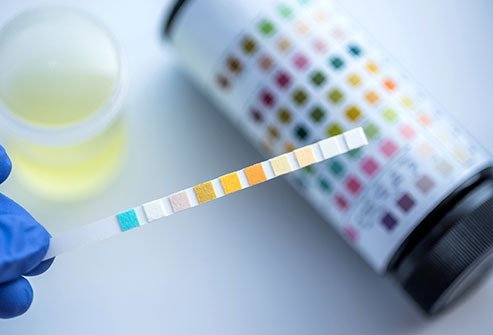
Physical examination is done to test for the presence and collection of prostatic fluid.
Physical examination is done to test for the presence and collection of prostatic fluid. This collected fluid is called expressed prostatic secretions.
The collected fluid samples are subjected to various tests to detect the signs of inflammation and infection of the prostate, recurrent urinary tract infections, or chronic or noninflammatory prostatitis or pelvic pain syndrome.
- The doctor inserts a lubricated, gloved finger into the rectum and pushes on either side of the prostate gland six or seven times while the person bends over or lies on their side or back.
- The urethra is then “milked” gently with a gloved finger. Secretions are collected in a tube or with a swab.
- The secretions are inspected under a microscope for indications of inflammation and cultivated in the lab to determine the presence of bacteria.
What is prostatic fluid?
Prostatic fluid is secreted by the prostate gland in males. During ejaculation, some amount of prostatic fluid is ejected along with sperm and semen into the male urethra.
- The prostatic fluid provides nourishment to the sperm.
- The proteins in prostatic fluid when combined with fluids derived from seminal vesicles will promote activation and functionality of the sperm.
What is a prostate?
The prostate is a walnut-sized gland of a male reproductive system present between the bladder and penis and right in front of the rectum.
The function of the prostate is to secrete:
- The prostatic fluid that provides nourishment to the sperm
- The seminal fluid that transports the sperm
The prostate helps metabolize hormones. An enzyme 5-alpha reductase in the prostate converts the male hormone testosterone into dihydrotestosterone (DHT), an active form of testosterone. DHT is responsible for the normal development of the prostate and develops secondary sexual characters, such as the production of facial hair in men.
The urethra is a small tube that connects the bladder to the penis, allowing the urine to exit the body. The urethra passes through the middle of the prostate. The prostate helps control the flow of urine in males. In the absence of the prostate, the urine flows freely through the urethra.
Men who undergo prostatectomy (removal of the prostate) should find other ways to control urination. Females do not have a prostate.

SLIDESHOW
Screening Tests Every Man Should Have See Slideshow
What are the common prostate disorders diagnosed by studying prostatic fluid?
Most men should begin frequent prostate screenings at the age of 50 years; however, screenings can begin as early as 40 to 45 years for men who are at increased risk of prostate disorders due to ethnicity or medical or family history.
Prostatitis
Prostatitis is inflammation or infection of the prostate. It is usually considered an inflammatory disorder of the male pelvic floor.
Depending on the severity of the condition, prostatitis is classified into various forms.
- Acute bacterial prostatitis
- Chronic bacterial prostatitis
- Inflammatory chronic prostatitis or pelvic pain syndrome
- Noninflammatory chronic prostatitis or pelvic pain syndrome
- Asymptomatic inflammatory prostatitis
Symptoms:
- Fever and chills
- Trouble urinating
- Pain and burning with urination
- Increased urine frequency
- Pain with ejaculation
- Pain in the bladder, testicles, penis, and anus
Prostate cancer
In the United States, prostate cancer is the most frequent cancer and the second leading cause of cancer mortality in males. Prostate cancer develops slowly and detecting and treating it before symptoms appear may not enhance men’s health or help them live longer lives.
Regular prostate cancer tests can detect the disease at an early stage even when no signs or symptoms exist.
Continued investigation of the prostate-specific protein components of the expressed prostatic secretions through urine, combined with improvement of clinical collection protocols, aids in the development of novel prostate cancer biomarkers. With these developments, early detection of prostate cancer through expressed prostatic secretions is possible.
Latest Men’s Health News
Daily Health News
Trending on MedicineNet
Medically Reviewed on 4/12/2022
References
Kaiser Permanente. Expressed Prostatic Secretions. https://wa.kaiserpermanente.org/kbase/topic.jhtml?docId=hw72961
Science Direct. Prostate Secretion. https://www.sciencedirect.com/topics/medicine-and-dentistry/prostate-secretion